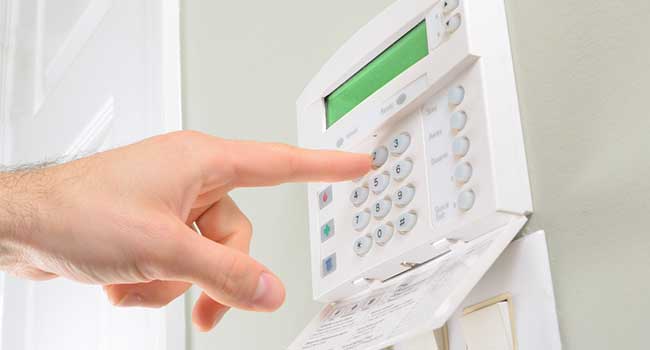
5 Things You Can Do to Avoid Battery-Related Risks
- By Joe Padilla
- Oct 04, 2018
With unexpected severe weather and natural disasters looming, one power outage can leave your customers’ businesses at risk. Ask yourself this question: Will the battery you installed into their fire and security system keep them up and running? The safety of their people, facility and goods will count on it. Subpar performance or unexpected battery failure can leave your brand’s reputation on the line. To avoid battery-related risks, follow these five tips to ensure you’re prepared for anything that comes your way.
Find the Right Battery for the System
In a recent survey of fire and security installation professionals, we found that 33% still believe all batteries are the same. From system requirements to battery specs and quality, there are a variety of considerations when selecting the right battery.
It may appear obvious to most, but you must match the battery to the system requirements. Using a battery that doesn’t have the proper specifications puts you at risk of damaging the entire system or sacrificing performance. This could possibly lead to major consequences for the people who are relying on it to function as it’s intended.
Pay close attention to manufacturer requirements such as voltage and amp-hour ratings to find a battery that you trust to meet that performance. You should also check terminal type, so you can ensure a proper connection. It is more important to match the requirements than trying to overpower the system or save money with a battery rated below what is recommended. It’s the combination of power rating, terminal type and size that lead to the perfect match.
The market is flooded with underpriced and underperforming batteries, any of which could spell disaster in the face of a crisis. You may have chosen the right battery for the system and at a lower cost, but can you trust it will perform as advertised? Not knowing if the battery will live up to the specs printed on the label is a serious problem that could leave you and your customer at risk.
Don’t gamble on quality to save money. Make sure your supplier has a quality control process that tests batteries to ensure they are performing to spec. Remember, printed specs are only part of the equation when choosing a reliable backup power source.
Even though it’s not always top-of-mind, selecting a high-performing battery that fits the system’s needs could keep your business and, ultimately, your clients’ business afloat during a crisis.
Use Fresh Batteries
Another thing your supplier should do is deliver freshly charged batteries and help you manage inventory so that you aren’t stocking product that won’t be used relatively soon. The importance of battery freshness isn’t often considered, but the impact on performance can be huge. Sealed Lead Acid alarm batteries that have been sitting too long (typically 6+ months) can begin to sulfate, which deteriorates their capacity and compromises the battery’s overall function.
Working with a supplier that provides freshly charged batteries will help lower the risk of subpar performance when backup power is needed most. Take the time to ask your supplier if they are delivering fresh product to ensure you aren’t installing batteries that are beyond their prime.
Use a Brand That Stands for the Same Quality You Do
In the same survey, we found that over half of fire and security professionals agree that the battery brand they use could affect their company image. Choosing a brand backed by a dependable, quality product not only reduces risk for your customer and your company in the event of an outage, but it also improves your reputation as a trusted partner.
If a battery fails, your customer will most likely look to you for answers. Every little detail counts when the safety of your customers and their assets are on the line.
You make purchasing decisions that help your company perform at its peak, so it’s no surprise that 57% of fire and security professionals indicate that battery purchases should be just as important. With the combination of quality products and a trusted supplier, you ensure you’re protecting your most valuable assets – your customers, your team members and your brand.
Don’t Accept Substitutions
It isn’t uncommon to work with a supplier that substitutes your order for a similar or same spec battery, but different brand. Not only does this leave you with less control over the quality of parts you use, it could expose you to higher risk if the substitution doesn’t perform as intended when it is really needed. Worried this is happening to you? Working with a battery specialist can help ensure that you are given the exact battery you ordered, not a replacement.
You are also at risk of incurring unnecessary expenses if the supplier substitutes your order for a more expensive option, and you must cover the cost. Don’t let substitutions leave you with increased expenses and questionable quality.
Consider the Impact of Logistics
What happens when you order a battery for a current or upcoming job and it’s out of stock? Having a supplier that is local and stocks the batteries you need keeps downtime to a minimum. If they aren’t local, ensure they keep the most common sizes in stock and offer fast and affordable shipping. You don’t want to leave your customer exposed if there is a power outage while you wait for the battery to arrive. Having a partner with predictable and reliable shipping or delivery could be the difference in keeping your customer and their property secure during an outage.
As a fire and security professional, you can’t afford to have unexpected battery failures, unplanned downtime or subpar performance. When is the last time you thought about the quality of your fire and security system batteries? Do you have an efficient solution for delivery and battery services? After all, it’s not just a battery, it’s your brand.